Implementation of a Wireless Sensor Network for Environmental Measurements
Abstract
1. Introduction
2. Materials and Methods
2.1. System Description
2.2. WSN Implementation Sites
3. Results and Discussions
3.1. Sensor and GUI Testing
3.2. Testing at Environmental Conditions
4. Conclusions
Author Contributions
Funding
Institutional Review Board Statement
Informed Consent Statement
Data Availability Statement
Conflicts of Interest
References
- Palniladevi, P.; Sabapathi, T.; Kanth, D.A.; Kumar, B.P. IoT Based Smart Agriculture Monitoring System Using Renewable Energy Sources. In Proceedings of the 2nd International Conference on Vision Towards Emerging Trends in Communication and Networking Technologies (ViTECoN), Vellore, India, 5–6 May 2023. [Google Scholar] [CrossRef]
- Bandara, T.M.; Mudiyanselage, W.; Raza, M. Smart farm and monitoring system for measuring the Environmental condition using wireless sensor network—IOT Technology in farming. In Proceedings of the 5th International Conference on Innovative Technologies in Intelligent Systems and Industrial Applications (CITISIA), Sydney, Australia, 25–27 November 2020. [Google Scholar] [CrossRef]
- Olivares, G.D. Energy-Efficent Operation of IoT Sensors in Precision Agriculture. Master’s Thesis, Norwegian University of Science and Technology, Trondheim, Norway, 2020. [Google Scholar]
- Ayaz, M.; Ammad-Uddin, M.; Sharif, Z.; Mansour, A.; Aggoune, E.-H.M. Internet-of-Things (IoT)-Based Smart Agriculture: Toward Making the Fields Talk. IEEE Access 2019, 7, 129551–129583. [Google Scholar] [CrossRef]
- Reza, Y.M.; Mohammad, R.A. Application of GIS and GPS in precision agriculture (a review). Int. J. Adv. Biol. Biomed. Res. 2015, 3, 7–9. Available online: http://www.ijabbr.com/article_12516_2a5ce07582300658c478705d7c31218e.pdf (accessed on 13 January 2024).
- Puri, V.; Nayyar, A.; Raja, L. Agriculture drones: A modern breakthrough in precision agriculture. J. Stat. Manag. Syst. 2017, 20, 507–518. [Google Scholar] [CrossRef]
- Kour, V.P.; Arora, S. Recent developments of the internet of things in agriculture: A survey. IEEE Access 2020, 8, 129924–129957. [Google Scholar] [CrossRef]
- Singh, R.K.; Berkvens, R.; Weyn, M. AgriFusion: An Architecture for IoT and Emerging Technologies Based on a Precision Agriculture Survey. IEEE Access 2021, 9, 136253–136283. [Google Scholar] [CrossRef]
- Khanna, A.; Kaur, S. Evolution of Internet of Things (IoT) and its significant impact in the field of Precision Agriculture. Comput. Electron. Agric. 2019, 157, 218–231. [Google Scholar] [CrossRef]
- Chen, J.; He, S.; Li, X. A study of big data application in agriculture. J. Phys. Conf. Ser. 2021, 1757, 012107. [Google Scholar] [CrossRef]
- Gutierrez, J.; Villa-Medina, J.F.; Nieto-Garibay, A.; Porta-Gandara, M.A. Automated Irrigation System Using a Wireless Sensor Network and GPRS Module. IEEE Trans. Instrum. Meas. 2014, 63, 166–176. [Google Scholar] [CrossRef]
- Jawad, H.; Nordin, R.; Gharghan, S.; Jawad, A.; Ismail, M. Energy-Efficient Wireless Sensor Networks for Precision Agriculture: A Review. Sensors 2017, 17, 1781. [Google Scholar] [CrossRef] [PubMed]
- Quaglia, G.; Visconte, C.; Scimmi, L.S.; Melchiorre, M.; Cavallone, P.; Pastorelli, S. Design of a UGV Powered by Solar Energy for Precision Agriculture. Robotics 2020, 9, 13. [Google Scholar] [CrossRef]
- Oliveira, T.E.; Reis, J.R.; Caldeirinha, R.F.S. Implementation of a WSN for Environmental Monitoring: From the Base Station to the Small Sensor Node. Sensors 2022, 22, 7976. [Google Scholar] [CrossRef] [PubMed]
- Effah, E.; Thiare, O.; Wyglinski, A.M. A Tutorial on Agricultural IoT: Fundamental Concepts, Architectures, Routing, and Optimization. IoT 2023, 4, 265–318. [Google Scholar] [CrossRef]
- Arjunan, S.; Sujatha, P. A survey on unequal clustering protocols in Wireless Sensor Networks. J. KSU Comput. Inf. Sci. 2019, 31, 304–317. [Google Scholar] [CrossRef]
- Gharaei, N.; Al-Otaibi, Y.; Butt, S.; Sahar, G.; Rahim, S. Energy-Effcient and Coverage-Guaranteed Unequal-Sized Clustering for Wireless Sensor Networks. IEEE Access 2019, 7, 157883–157891. [Google Scholar] [CrossRef]
- Visconti, P.; Giannoccaro, N.I.; de Fazio, R.; Strazzella, S.; Cafagna, D. IoT-oriented software platform applied to sensors-based farming facility with smartphone farmer app. Bull. Electr. Eng. Inform. 2020, 9, 1095–1105. [Google Scholar] [CrossRef]
- Tagarakis, A.C.; Kateris, D.; Berruto, R.; Bochtis, D. Low-Cost Wireless Sensing System for Precision Agriculture Applications in Orchards. Appl. Sci. 2021, 11, 5858. [Google Scholar] [CrossRef]
- Yu, Y.; Xue, B.; Chen, Z.; Qian, Z. Cluster tree topology construction method based on PSO algorithm to prolong the lifetime of ZigBee wireless sensor networks. J. Wirel. Commun. Netw. 2019, 199. [Google Scholar] [CrossRef]
- Carrillo-Niquete, G.A.; Andrade, J.L.; Valdez-Lazalde, J.R.; Reyes-García, C.; Hernández-Stefanoni, J.L. Characterizing spatial and temporal deforestation and its effects on surface urban heat islands in a tropical city using Landsat time series. Landsc. Urban Plan. 2022, 217, 104280. [Google Scholar] [CrossRef]
- Weather History in Veracruz. Available online: https://weatherspark.com/h/m/8657/2023/1/Historical-Weather-in-January-2023-in-Veracruz-Mexico#Figures-Temperature (accessed on 7 August 2023).
- Schwaab, J.; Meier, R.; Mussetti, G.; Seneviratne, S.; Bürgi, C.; Davin, E.L. The role of urban trees in reducing land surface temperatures in European cities. Nat. Commun. 2021, 12, 6763. [Google Scholar] [CrossRef] [PubMed]
- Figaro. TGS 2611. Available online: https://www.figaro.co.jp/product/entry/tgs2611-e00.html (accessed on 11 September 2023).
- Radi, M.; Purwantana, B.; Muzdrikah, F.S.; Nuha, M.S.; Rivai, M. Design of Wireless Sensor Network (WSN) with RF Module for Smart Irrigation System in Large. In Proceedings of the International Conference on Computer Engineering, Network and Intelligent Multimedia (CENIM), Surabaya, Indonesia, 26–27 November 2018; pp. 181–185. [Google Scholar] [CrossRef]
- Af’idah, D.I.; Rochim, A.F.; Widianto, E.D. Design of Wireless Sensor Networks (WSN) to Monitor Temperature and Humidity Using nRF24L01+. J. Teknol. Dan Sist. Komput. 2014, 2, 267–276. [Google Scholar]
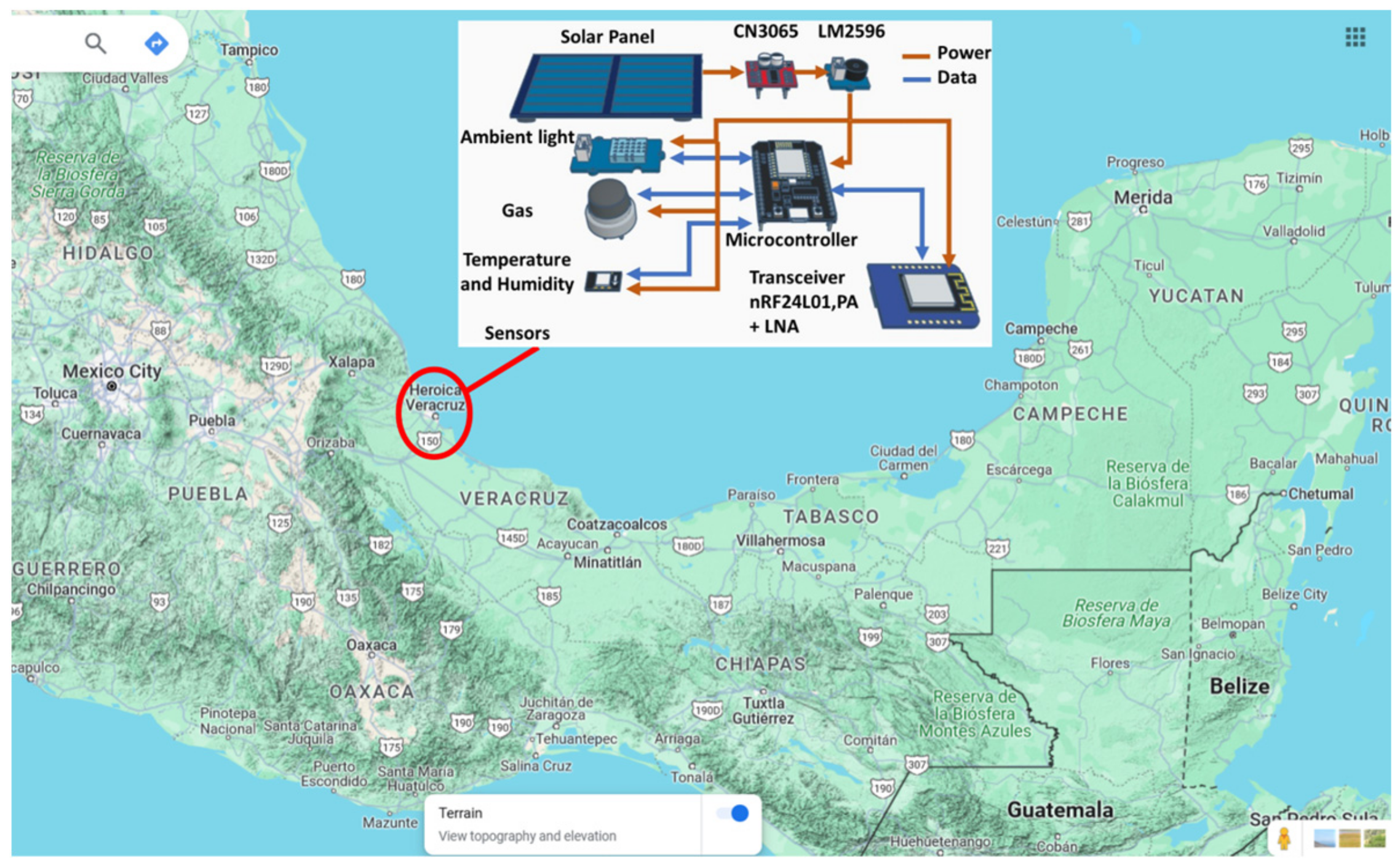
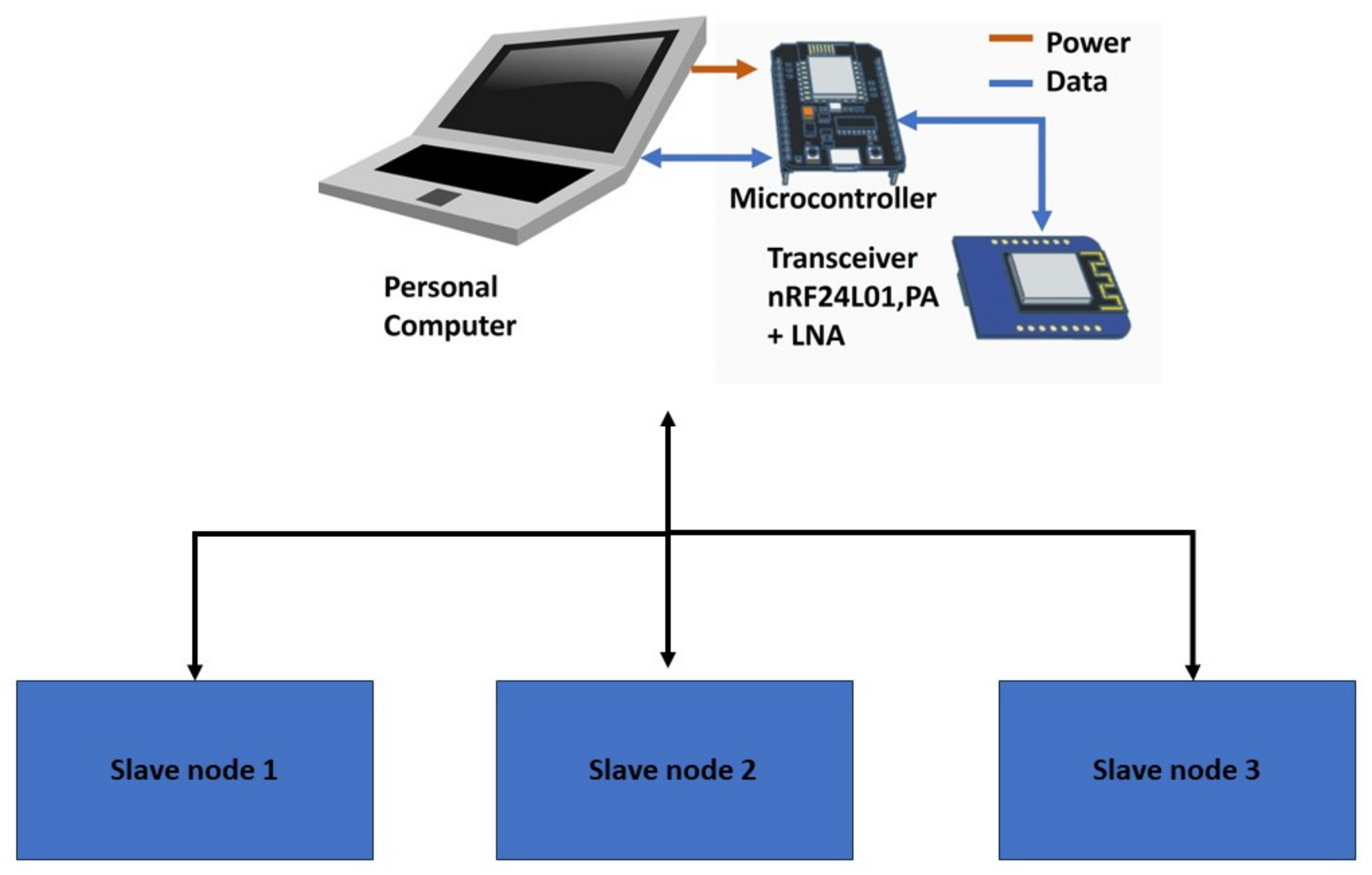
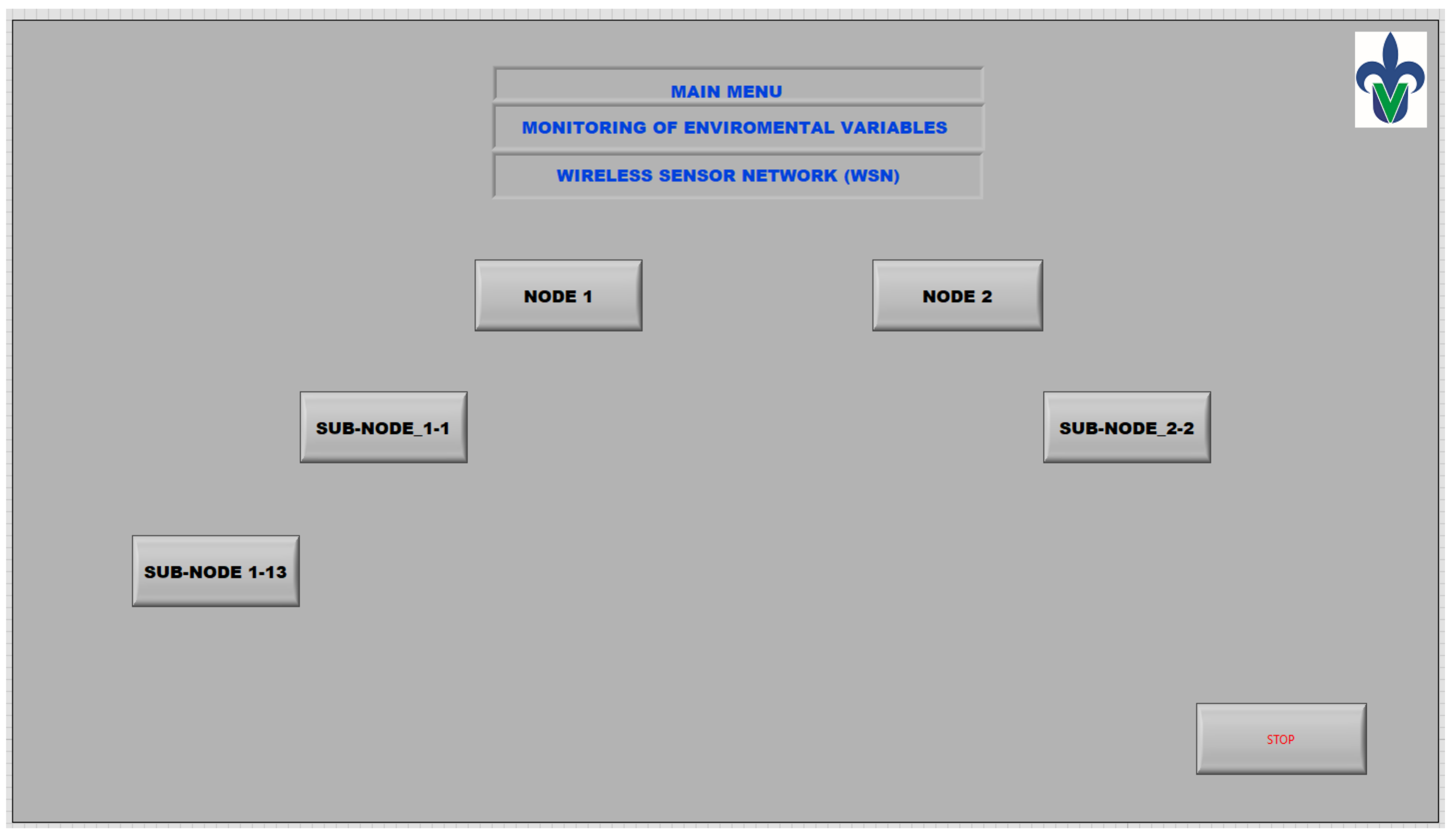

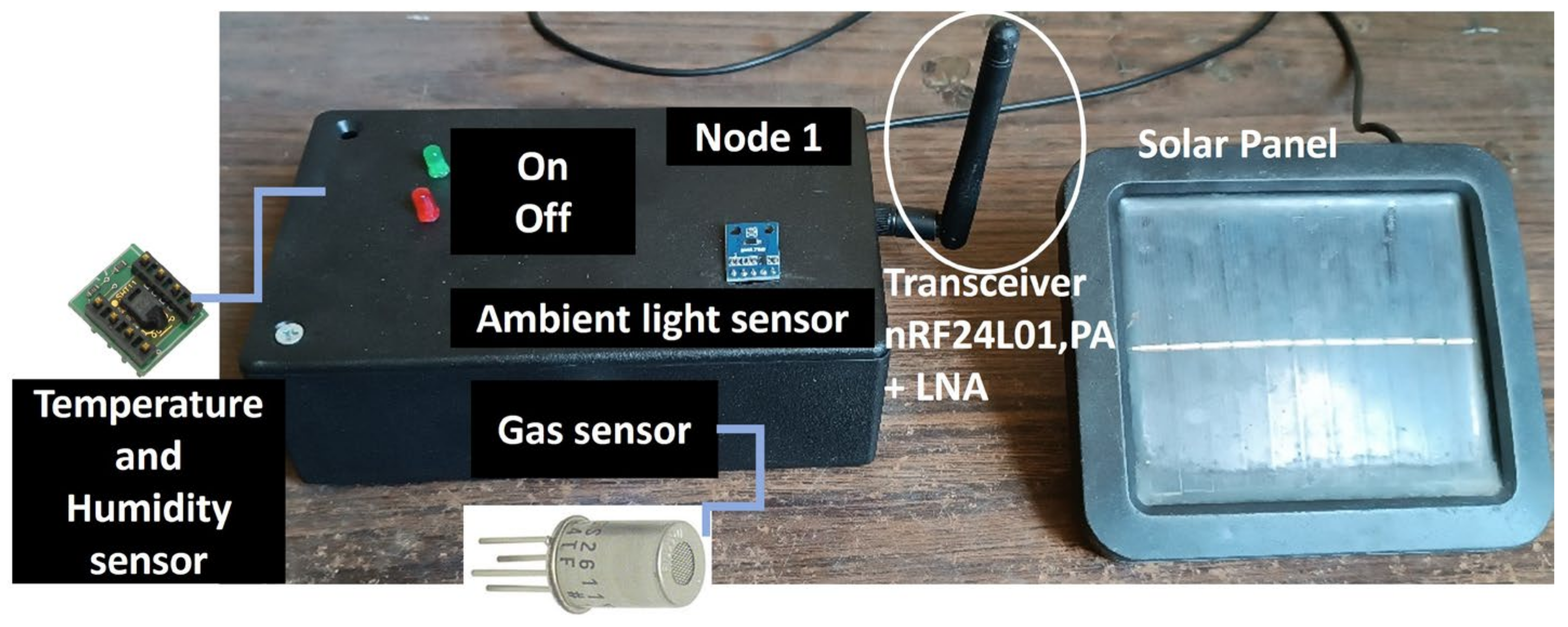
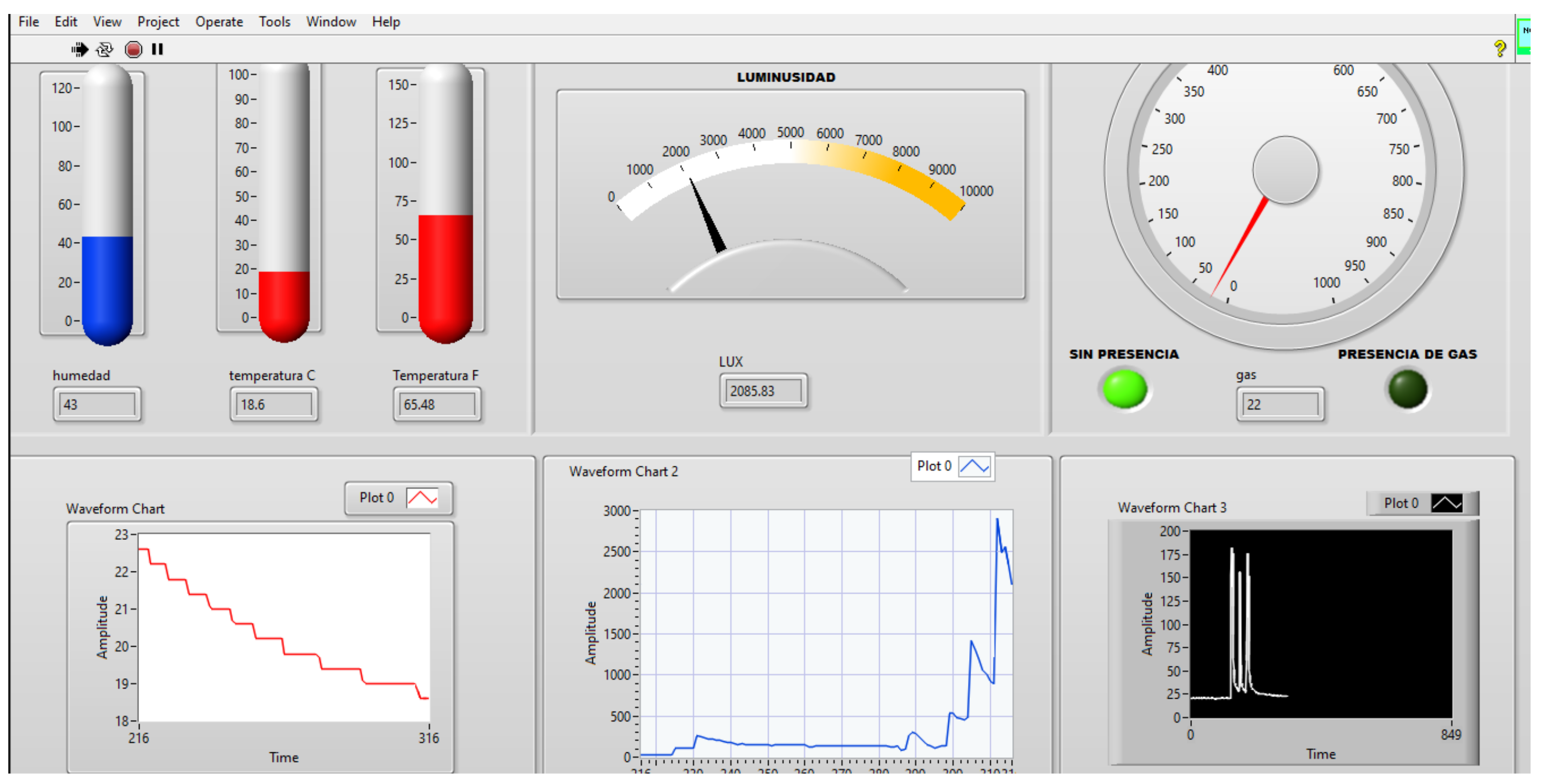
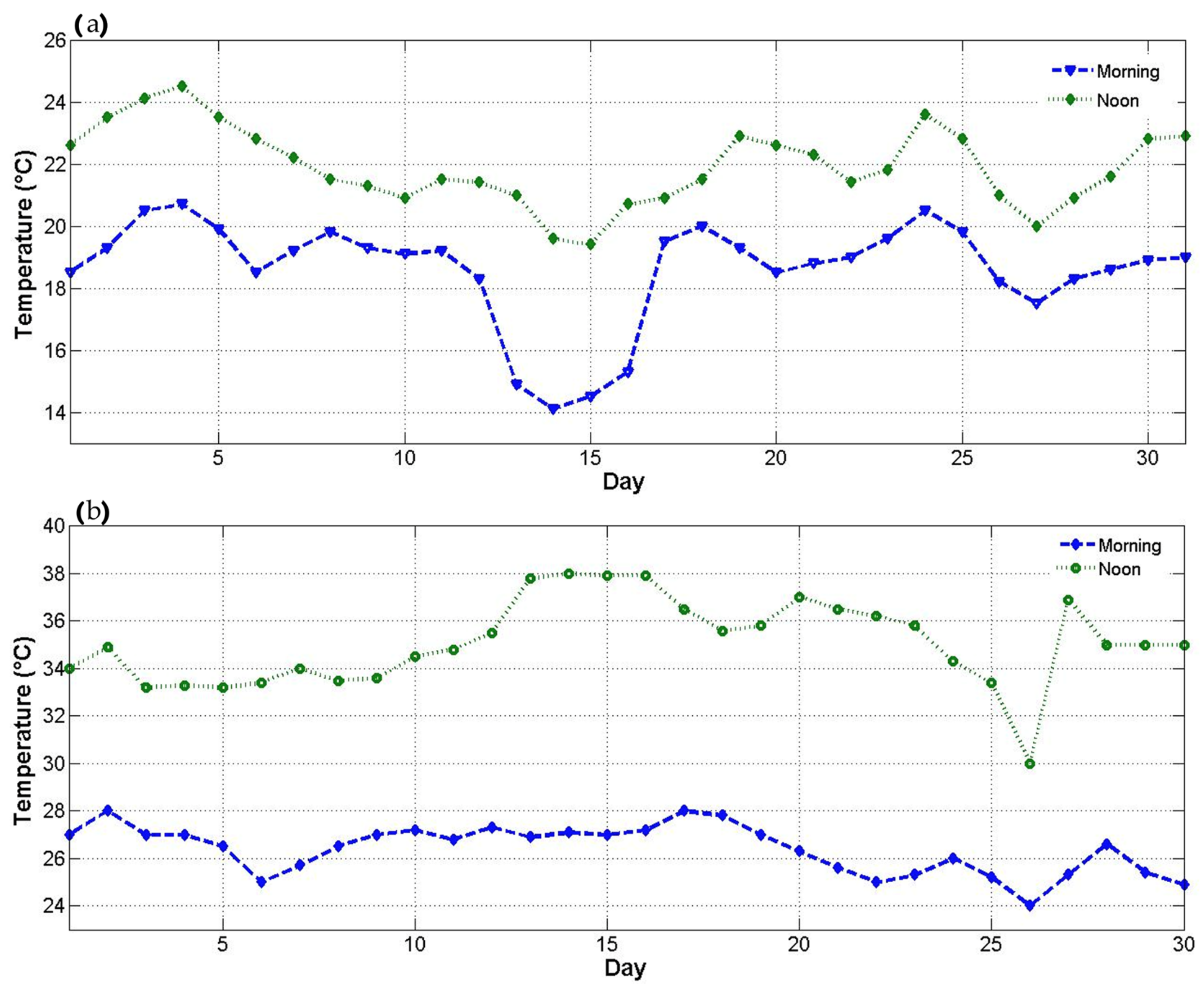
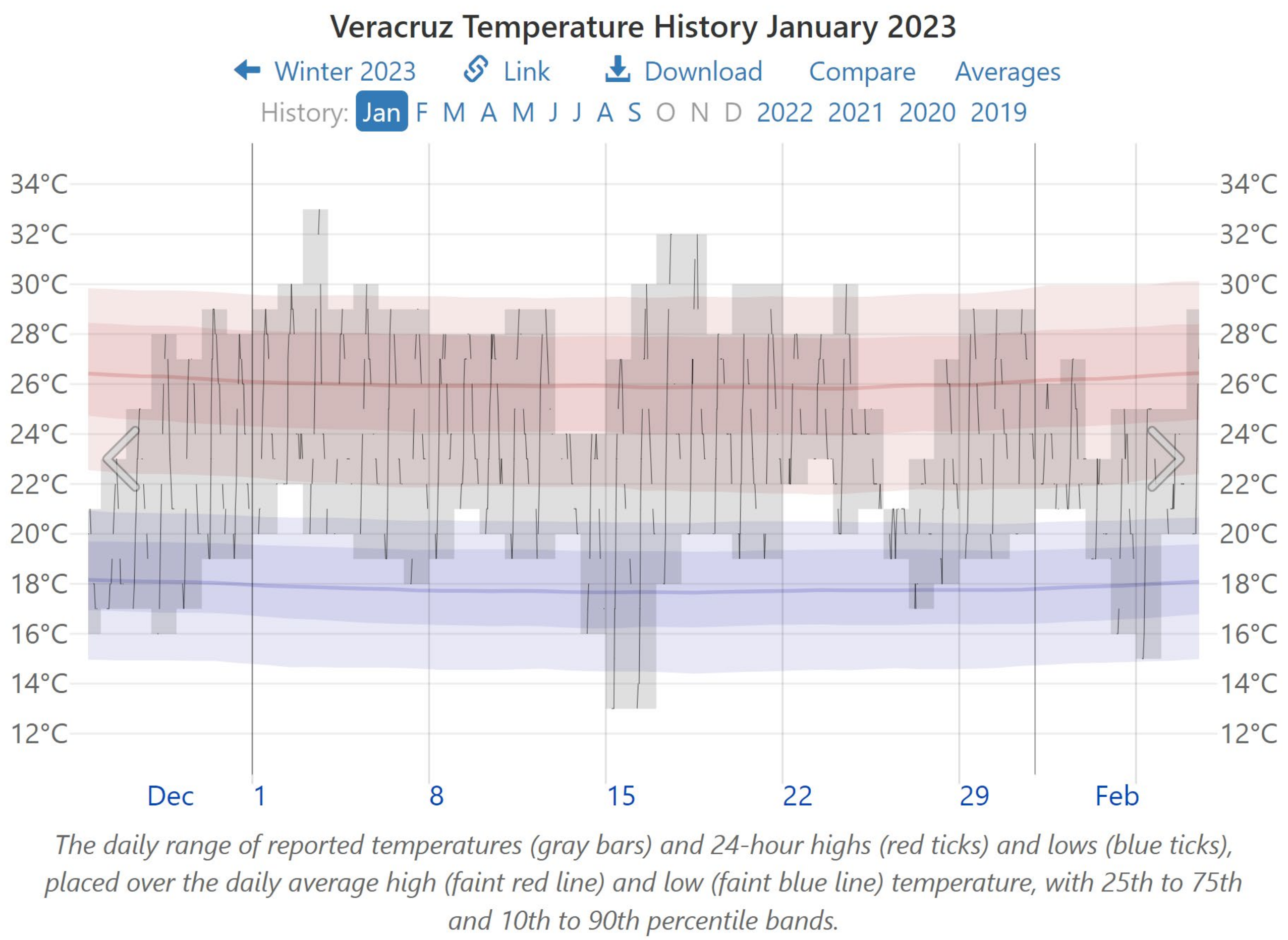
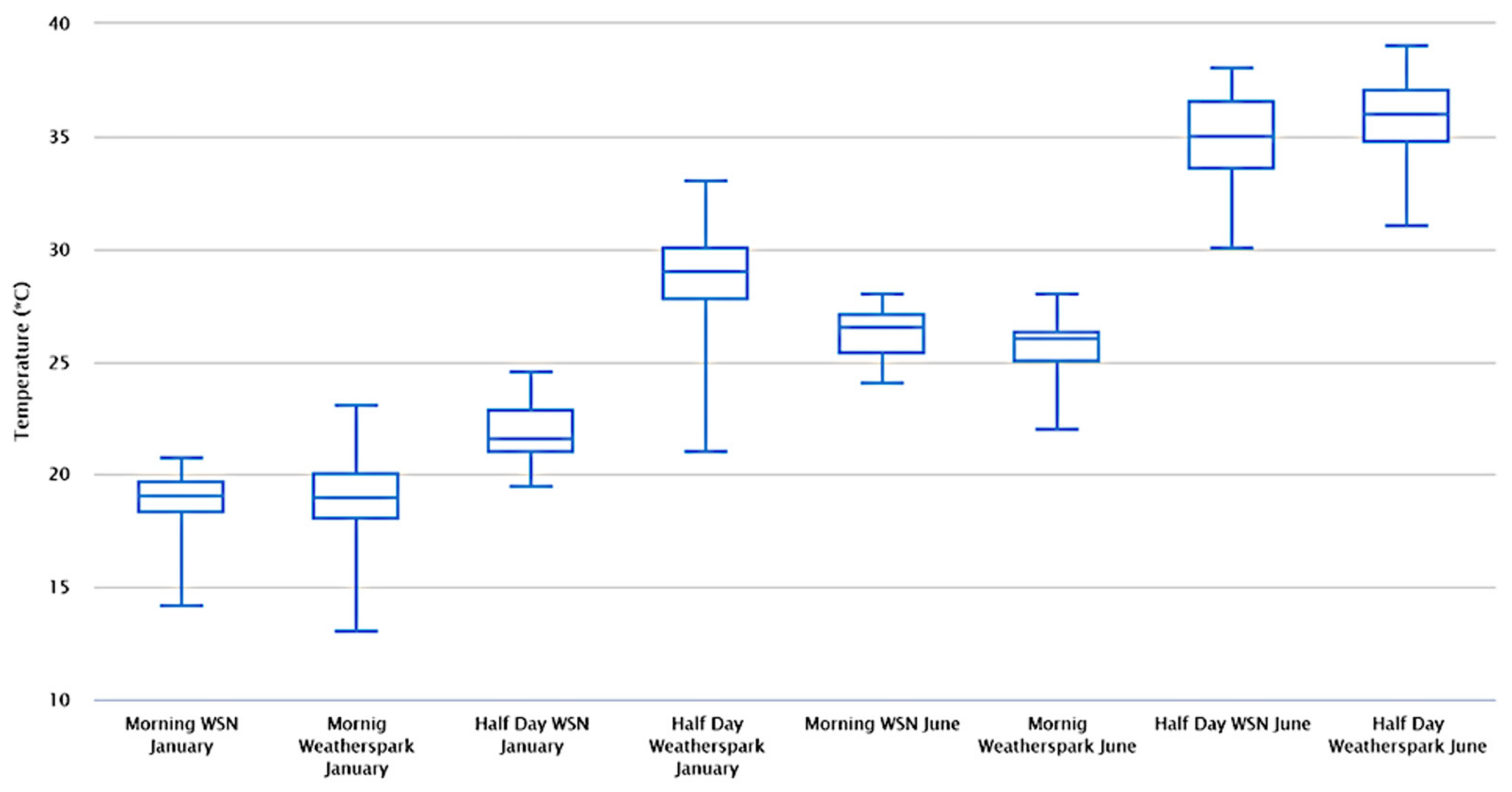
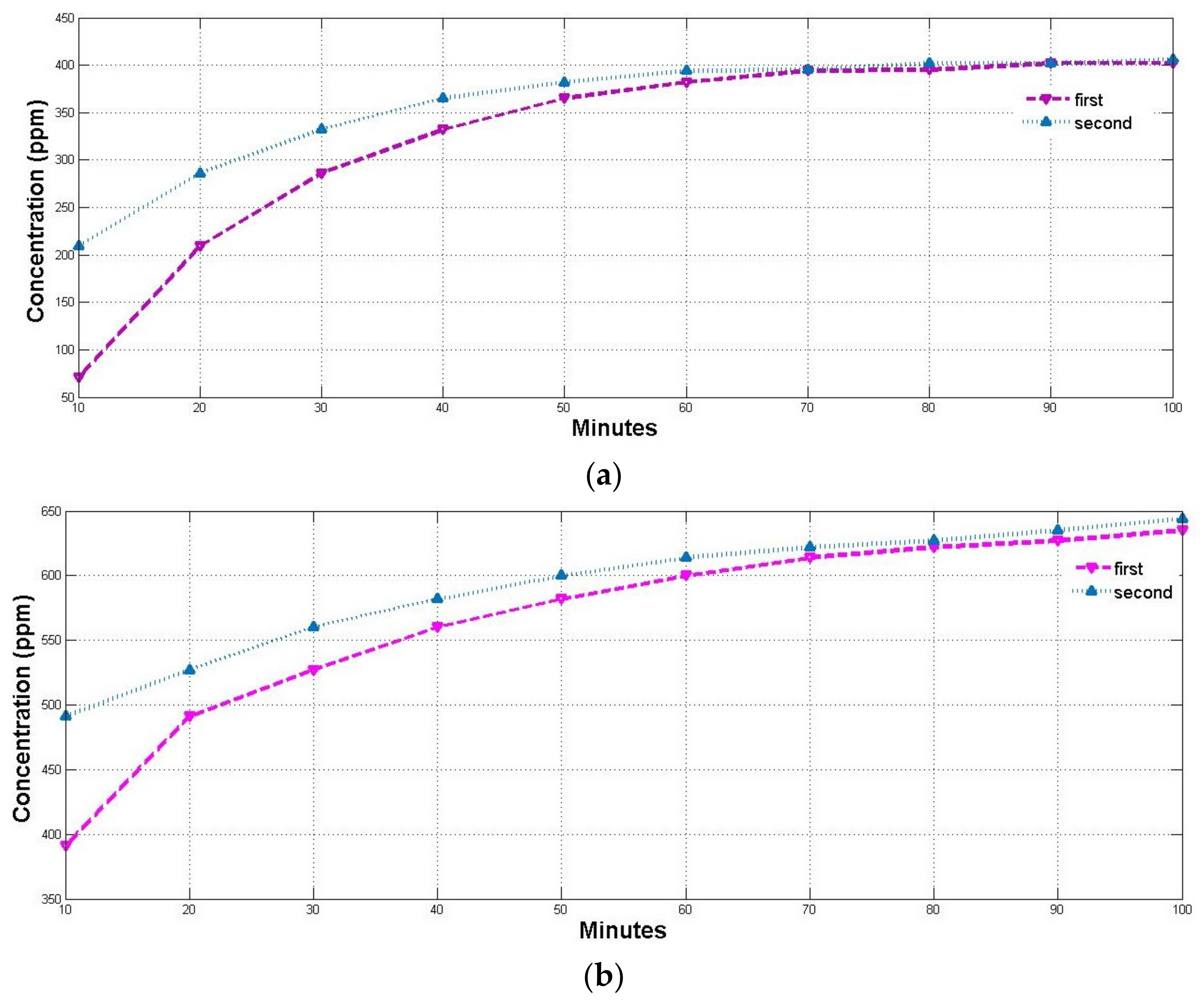
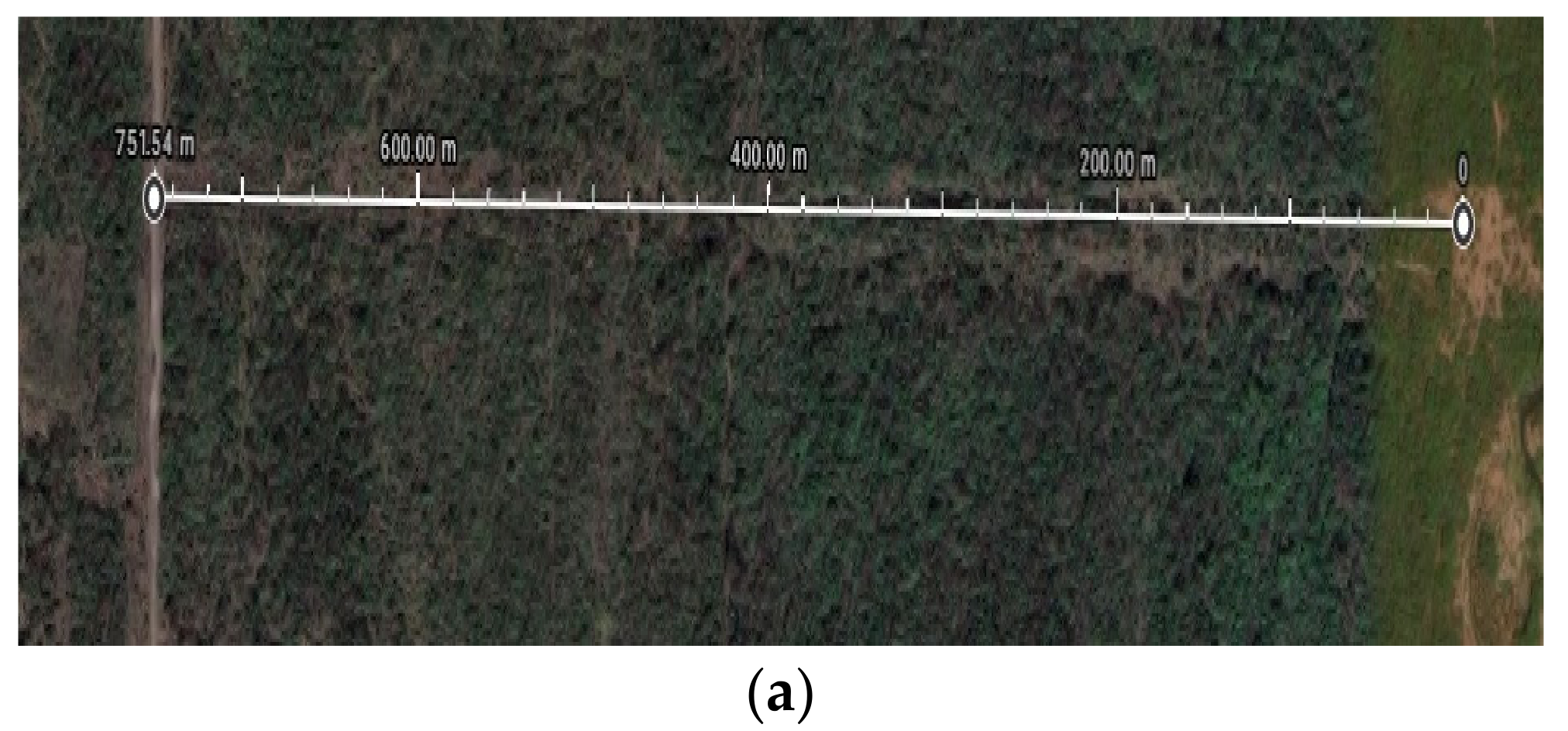
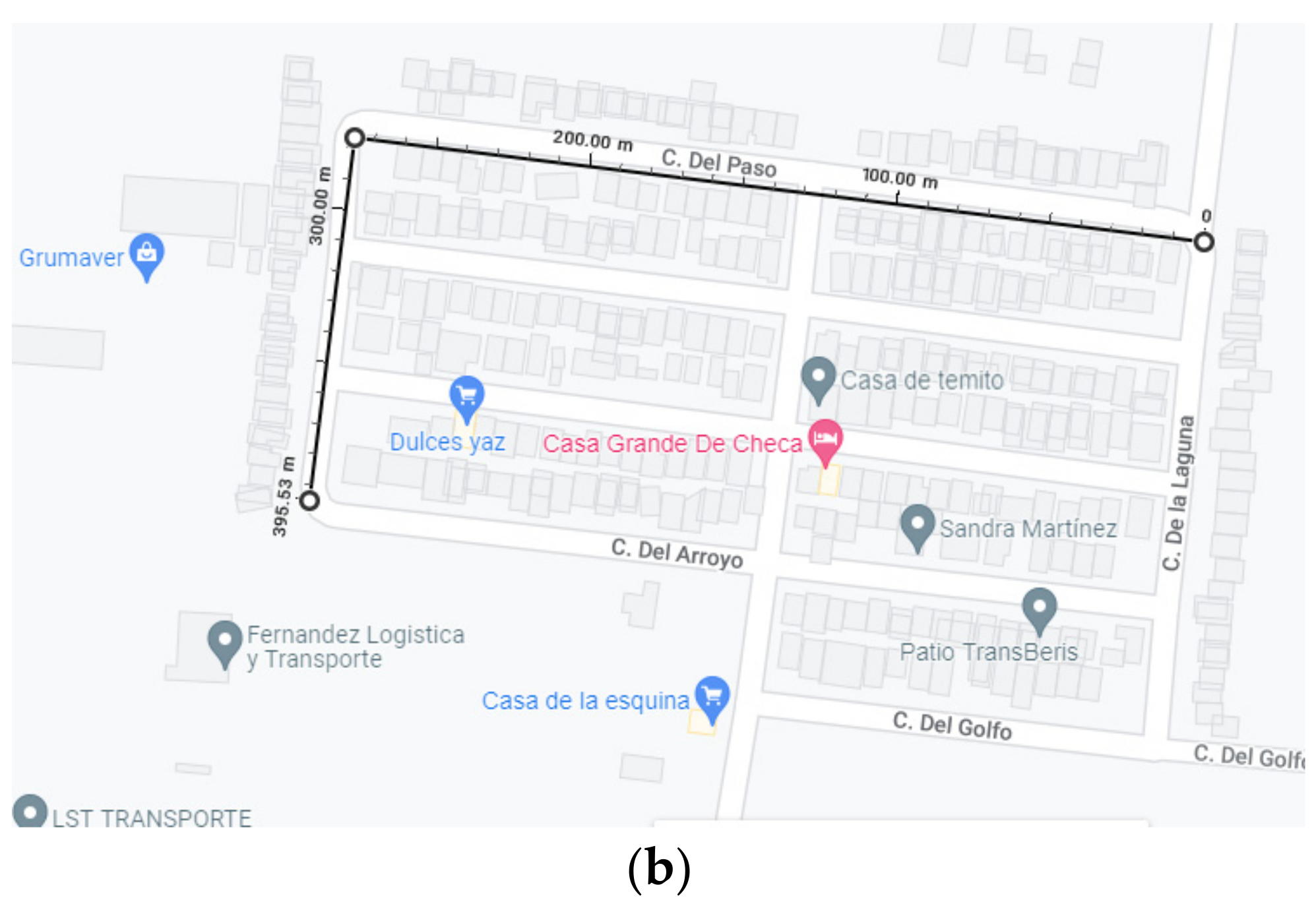
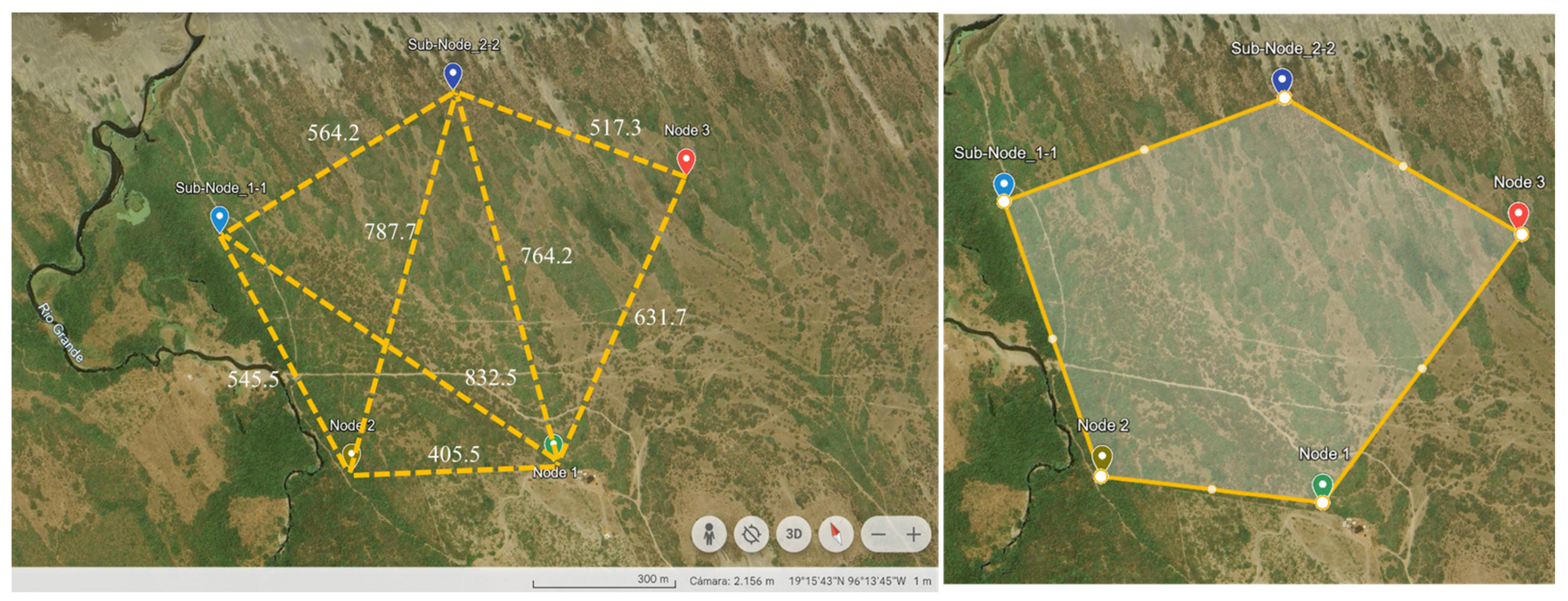
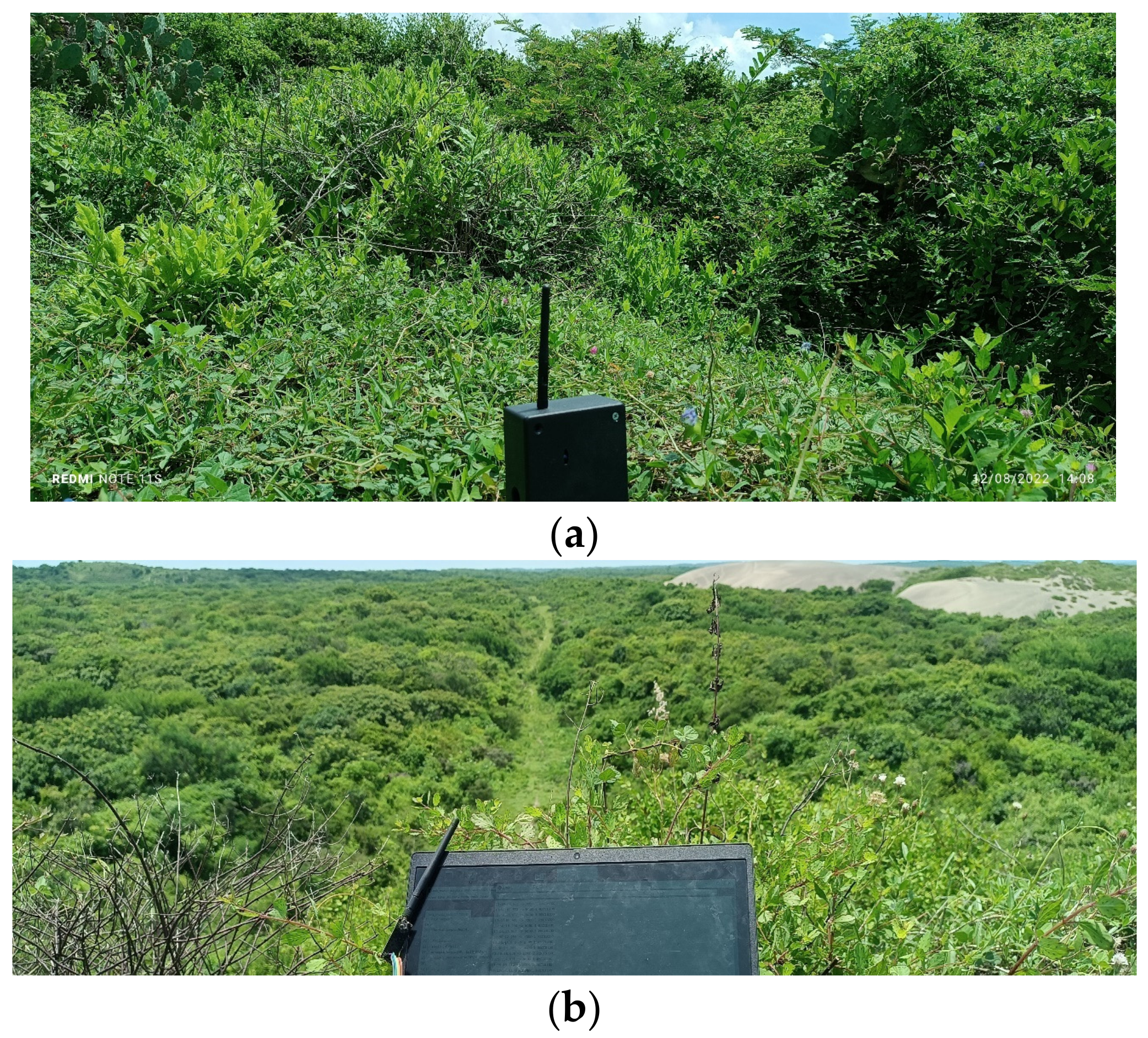
| Node | Latitude | Length | Next Node | Distance from Actual to Next Node (m) |
|---|---|---|---|---|
| Node 1 | 19°25′53″ | −96°22′33″ | Node 2 | 405.5 |
| Node 2 | 19°26′03″ | −96°22′36″ | Sub-Node_1-1 | 545.5 |
| Sub-Node_1-1 | 19°26′06″ | −96°21′83″ | Sub-Node_1-2 | 564.2 |
| Sub-Node_1-2 | 19°25′73″ | −96°21′48″ | Node 3 | 517.3 |
| Node 3 | 19°25′38″ | −96°21′96″ | Node 1 | 631.7 |
| Node 1 | Sub-Node_1-1 | 832.5 | ||
| Node 2 | Sub-Node_1-1 | 787.7 | ||
| Node 1 | Sub-Node_2-2 | 841.8 |
Disclaimer/Publisher’s Note: The statements, opinions and data contained in all publications are solely those of the individual author(s) and contributor(s) and not of MDPI and/or the editor(s). MDPI and/or the editor(s) disclaim responsibility for any injury to people or property resulting from any ideas, methods, instructions or products referred to in the content. |
© 2024 by the authors. Licensee MDPI, Basel, Switzerland. This article is an open access article distributed under the terms and conditions of the Creative Commons Attribution (CC BY) license (https://creativecommons.org/licenses/by/4.0/).
Share and Cite
Woo-García, R.M.; Pérez-Vista, J.M.; Sánchez-Vidal, A.; Herrera-May, A.L.; Osorio-de-la-Rosa, E.; Caballero-Briones, F.; López-Huerta, F. Implementation of a Wireless Sensor Network for Environmental Measurements. Technologies 2024, 12, 41. https://doi.org/10.3390/technologies12030041
Woo-García RM, Pérez-Vista JM, Sánchez-Vidal A, Herrera-May AL, Osorio-de-la-Rosa E, Caballero-Briones F, López-Huerta F. Implementation of a Wireless Sensor Network for Environmental Measurements. Technologies. 2024; 12(3):41. https://doi.org/10.3390/technologies12030041
Chicago/Turabian StyleWoo-García, Rosa M., José M. Pérez-Vista, Adrián Sánchez-Vidal, Agustín L. Herrera-May, Edith Osorio-de-la-Rosa, Felipe Caballero-Briones, and Francisco López-Huerta. 2024. "Implementation of a Wireless Sensor Network for Environmental Measurements" Technologies 12, no. 3: 41. https://doi.org/10.3390/technologies12030041
APA StyleWoo-García, R. M., Pérez-Vista, J. M., Sánchez-Vidal, A., Herrera-May, A. L., Osorio-de-la-Rosa, E., Caballero-Briones, F., & López-Huerta, F. (2024). Implementation of a Wireless Sensor Network for Environmental Measurements. Technologies, 12(3), 41. https://doi.org/10.3390/technologies12030041








